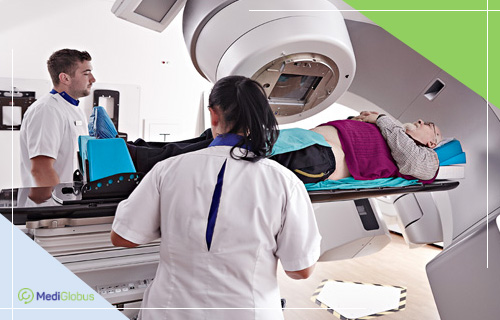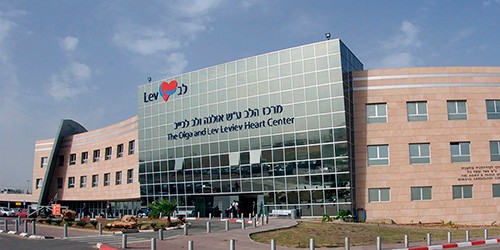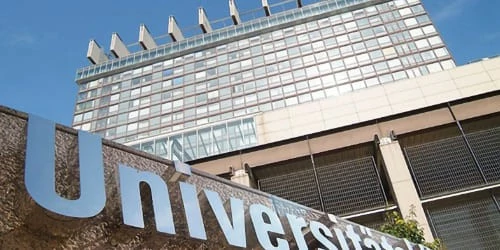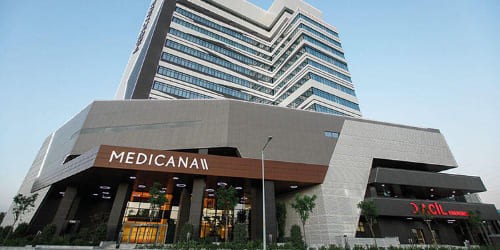Nodular lymphocyte-predominant Hodgkin lymphoma (NLPHL) is a rare type of blood cancer. It occurs in 5% of all patients with Hodgkin lymphoma. Often the disease can be diagnosed at an early stage, but the key to this is timely referral to a doctor.
The treatment strategy for nodular lymphoma differs from the standard one for Hodgkin’s lymphoma and depends on factors such as the stage of the disease, risk assessment, the patient’s condition, etc. Read more about how such patients are saved abroad in our article.
What is nodular Hodgkin’s lymphoma and what are its symptoms?

Nodular Hodgkin lymphoma with lymphoid predominance (NLPHL) is a malignant disease characterised by the growth of abnormal (cancerous) cells in the human lymphatic system, typically in the lymph nodes.
NSCLC is distinguished from other types of lymphoma by the presence of a large number of so-called “lymphocyte-predominant (LP) cells”, while classic Hodgkin’s lymphoma is characterised by Reed-Sternberg cells.
The disease is three times more likely to affect men than women and is predominantly diagnosed in patients aged 30-50 years.
The most common symptom of the disease is painless enlarged lymph nodes, most commonly – cervical, axillary or inguinal. In many patients, the disease occurs in only one area.
Central lymph node involvement, as well as symptoms typical of typical lymphomas – fever, night sweats, weight loss – occur in only 6-15% of patients with nodular Hodgkin lymphoma.
Spread of the cancer to the liver, spleen or bone marrow is similarly rare and is considered a sign of a more aggressive variant of the disease with a worse prognosis.
Very often, Hodgkin’s nodular lymphoma develops slowly, so that it can be detected at the first stage in about 63% of patients. However, 21% are diagnosed at an advanced stage, and patients in countries with developing medicine are more at risk of falling into this group.
A dangerous aspect of the disease is the risk of the transformation of NLPHL into aggressive T-cell-rich B-cell lymphoma (TCRBCL). This transition occurs in 6-7% of patients over 10 years of disease and is associated with a more difficult prognosis.
Where to go for cancer treatment?
MediGlobus’ coordinating physicians can help you find the best option for lymphoma treatment abroad based on your budget and individual needs. For a free consultation, please click the button below and fill out the form. We will contact you as soon as possible and help you with any questions you may have.
How is nodular lymphoma diagnosed?
Diagnosis of NLDL begins with a thorough collection of medical history and physical examination to identify existing symptoms and risk factors for developing lymphoma. Additional tests used to diagnose and stage the cancer include tumour biopsy, imaging and blood tests. An accurate diagnosis is important to determine the best treatment approach.
Blood tests | The most important tests for lymphoma are a complete blood count and erythrocyte sedimentation rate. Blood tests for liver and kidney function, as well as tests for HIV and hepatitis B and C, are important for assessing the patient’s condition and formulating a treatment plan. |
Biopsy | A biopsy of an enlarged lymph node is the main test needed to make a diagnosis of nodular Hodgkin’s lymphoma. After a tissue sample is taken using a needle or scalpel, it is sent to a laboratory for immunohistochemistry. This allows the cells to be studied at a microscopic level and differentiate NLPHL from other types of lymphoma. |
Imaging tests | When diagnosing lymphoma, doctors may order CT, MRI, or PET scans. These are performed to detect potential clusters of cancer cells within the body. These diagnostic methods differ in which types of tissues and organs they work better on. |
Treatment of nodular Hodgkin’s lymphoma
The treatment regimen for Hodgkin’s nodular lymphoma depends on the stage of the disease. Although in many ways it is similar to other lymphomas, the specific cellular structure and the manner of the disease course require a special approach in the choice of treatment methods and the drugs themselves.
Treatment of NLPHL in the early stages
Adult patients with stage 1A Hodgkin’s nodular lymphoma without additional risk factors are predominantly treated with radiation therapy. The latest generation of external radiation devices, which are used in leading foreign oncology centres, give the best results in such cases. This is because their dosage and method of radiation delivery are the most precise and the degree of irradiation of healthy tissue is minimal.
The largest studies on the effectiveness of radiotherapy for NLPHL were conducted by the German Hodgkin Lymphoma Study Group (GHSG) and found a 95-99% survival rate for patients with this treatment.
therapy (less often chemotherapy alone). The preferred regimen in most centres remains two courses of a combined chemotherapy protocol followed by consolidation radiotherapy. In other cases, doctors most often use chemotherapy combined with radiation.
Patients should be aware of the side effects caused by cancer treatment. They most commonly deal with hair loss, leukopenia and infections.

In children and adolescents, it is possible to treat Hodgkin’s lymphoma with surgery alone – removal of the affected lymph node.
Treatment of advanced NLPHL

In advanced stages, the treatment of NLPHL depends on the patient’s assessment and usually consists of different chemotherapy protocols./p>
The most common treatment protocol is R-CHOP. This is a combination of chemotherapy drugs that are administered to the patient over an extended period. In some cases, the chemo may be supplemented with subsequent radiation therapy if necessary. The efficacy of this protocol in NLPHL is good, with 85,7% of patients showing a response to treatment and the disease ceasing to progress.
Patients with so-called “high-risk features” – large lymphatic masses, extranodal lesions or bone marrow involvement – require a more aggressive approach. In such cases, the BEACOPP protocol is used. Its effectiveness is about the same as R-CHOP, but the latter is less toxic to the body.
Where to go for cancer treatment?
MediGlobus’ coordinating physicians can help you find the best option for lymphoma treatment abroad based on your budget and individual needs. Request a free consultation by clicking the button below and filling out the form. We will contact you as soon as possible and help you with any questions you may have.
Treatment of relapsed NLPHL
Relapse of lymphoma occurs in a relatively high percentage of patients – 9-16%. Such an outcome is more problematic to treat than primary lymphoma, not least because of the development of resistance to previously used drugs.
However, protocols for the treatment of relapsed nodular lymphoma do exist and show reasonably good results.
The choice of treatment for relapsed NLPHL is individualised and depends on many factors. Patients usually require a decisive and aggressive approach. Factors such as the period between remission and recurrence, tumour size and previous treatment play an important role.
The treatment approaches used by doctors may include:

Chemotherapy;
Chemoradiation therapy;
Targeted therapy;
Bone marrow transplantation.
The effectiveness of treatment of relapsed disease with a comprehensive modern approach is quite good – studies show a positive response in up to 94% of patients.
Prognosis of patients with nodular lymphoma
Patients with nodular lymphoma have a fairly good prognosis for treatment. Up to 90-99% of cases can be cured, especially if the disease is diagnosed at stage 1.
Among the factors associated with a more difficult treatment prognosis:
Detection of disease in more than 3 lymph nodes;nbsp;
Extranodal spread, especially bone marrow involvement;
Particularly large tumours;
Elevated ESR.
The use of aggressive treatment strategies can cause some adverse effects on the body, so despite an overall positive prognosis, it is important to consult an experienced cancer centre.
Patients with NLPHL also recur quite frequently, so follow-up with an oncologist and regular check-ups for 3-6 years should be part of the mandatory medical routine.
Where to go for treatment of NLPHL?
Liv Vadistanbul Clinic
Read about the clinic →

Lymphoma patients at Liv Vadistanbul Clinic are treated in a specialised oncohematology department. The centre offers its patients modern treatment protocols, comfortable rooms and attentive service.
Chaim Sheba Medical Centre
Read about the clinic →

To treat lymphoma, the Sheba Clinic enlists a team of doctors consisting of oncologists, haematologists, haematopathologists and radiation oncologists. In addition, the well-being of patients is supported by clinical psychologists and nutritionists.
SoonChunHyang Hospital
Read about the hospital →

The Department of Oncology and Haematology focuses on the research of modern methods of lymphoma treatment and the application of gentle approaches, in particular target therapy. The clinic is ranked among the best in Korea.
University Hospital Cologne
Read about the clinic →

Uniklinik Köln is a modern multidisciplinary clinic with a strong oncohaematology department. This centre has some of the highest ratings in the country, with a 90% patient satisfaction rate.
Medicana Ataşehir Clinic
Read about the clinic →

Medicana Hospital provides state-of-the-art lymphoma treatment and has a strong bone marrow transplant department. The equipment available at the clinic makes it one of the strongest medical centres in Europe.
Teknon Clinic
Read about the clinic →

The medical centre is one of the top 3 best hospitals in Spain. Teknon Clinic is distinguished by the use of modern drugs and equipment, as well as close cooperation with the leading cancer centres of the world.
Summary
Hodgkin’s nodular lymphoma with lymphoid predominance is a malignant disease characterised by the growth of cancer cells in the human lymphatic system. The disease is most often manifested by painless enlargement of lymph nodes in the neck, axillary sinuses or pelvis.
The main method of diagnosing this disease is lymph node biopsy, which is usually followed by blood tests and imaging methods (CT, MRI, PET).
Treatment of Hodgkin’s nodular lymphoma in the primary stage usually consists of radiotherapy, while chemotherapy or chemoradiation therapy is used in the later stages. A relapse of the disease, the risk of which exists, may be treated with chemotherapy, chemoradiation therapy, targeted therapy, or bone marrow transplantation.
The prognosis for treatment of nodular lymphoma is good – 90% of patients manage to get rid of the disease.
For high-quality treatment of nodular lymphoma abroad, the international platform MediGlobus recommends applying to clinics in Turkey (Liv Vadistanbul, Medicana Atasehir), Spain (Teknon), Germany (Uniclinica Cologne), South Korea (SoonChunHyang), and Israel (Sheba).nbsp;
To make an appointment for this procedure abroad, click on the button below and fill out the form. Our coordinators will call you back within 30 minutes. They will provide all the necessary information and help you with travel arrangements.
Sources:
- 1. Hematology: The American Society of Hematology Education Program
- 2. Journal of Investigative Medicine High Impact Case Reports
- 3. American Cancer Society
- 4. Nature
- 5. Cancers
- 6. 12th European Conference on Rare Diseases & Orphan Products
- 7. Nodular Lymphocyte-Predominant Hodgkin Lymphoma: Your Guide
- 8. Journal of Clinical Oncology






